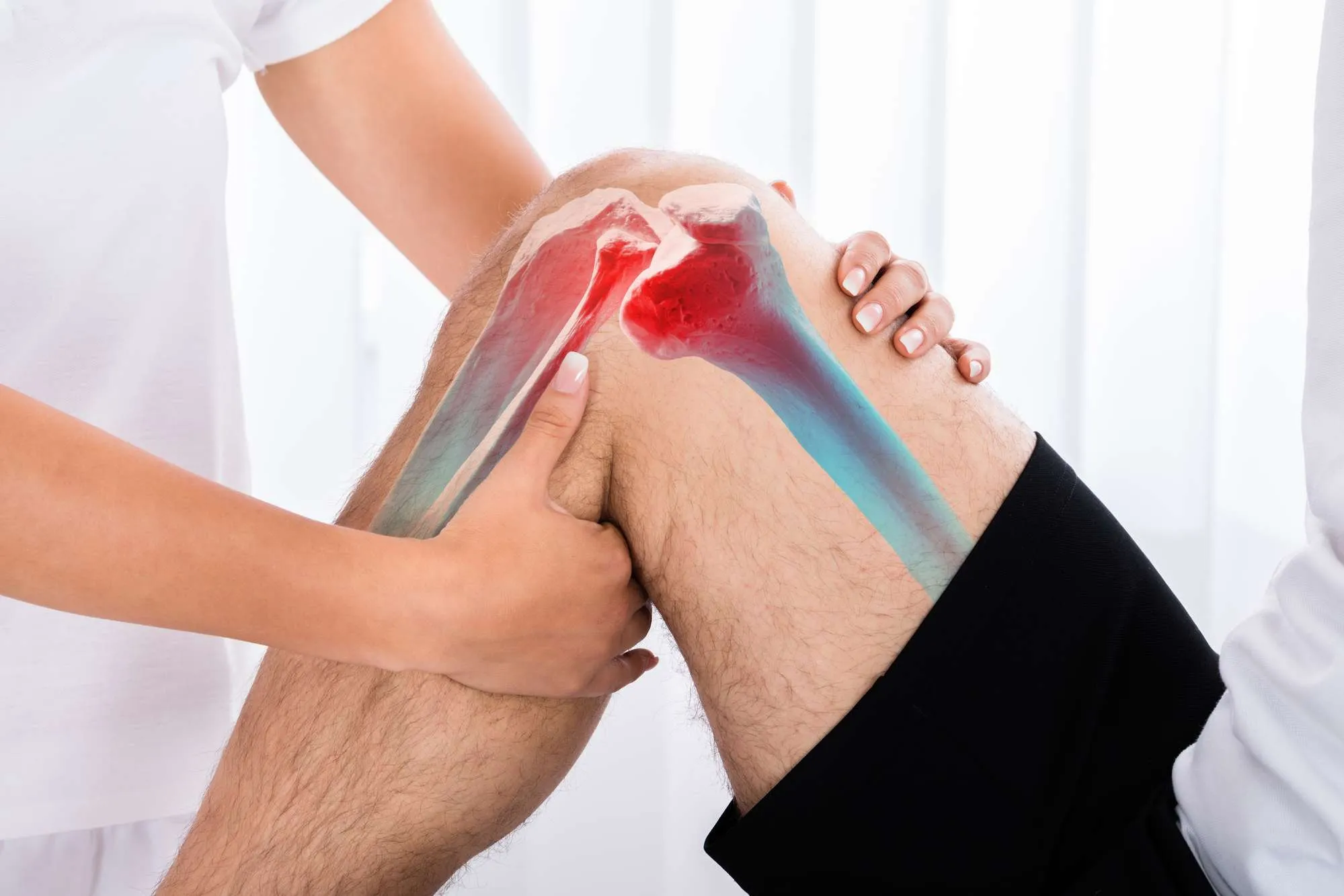
An Anterior Cruciate Ligament (ACL) tear in the knee is one of the most common and often devastating injuries in sports, but it’s not exclusive to athletes. A sudden pivot, an awkward landing, or a direct blow can rupture this crucial ligament, which connects the thigh bone to the shin bone, providing critical stability to the knee. The immediate aftermath is usually marked by pain, swelling, and a feeling of instability. However, once the initial acute phase subsides, individuals are often faced with a pivotal decision: ACL tears: surgery or rehabilitation? This isn’t a straightforward choice, and the optimal path varies significantly from person to person. It hinges on a complex interplay of factors including age, activity level, the severity of the tear, and the presence of other associated knee injuries. Navigating this decision requires a thorough understanding of both pathways, acknowledging that each carries its own set of benefits, risks, and a demanding commitment to recovery. The goal is always to restore knee function, prevent long-term complications, and enable a return to desired activities, but how one gets there can differ profoundly.
The Anatomy of an ACL Tear: Understanding the Injury
Before delving into treatment, it’s essential to grasp the anatomy of an ACL tear, providing a foundational understanding of the injury. The ACL is one of four major ligaments in the knee, positioned diagonally in the center of the joint. Its primary role is to prevent the tibia (shin bone) from sliding too far forward on the femur (thigh bone) and to limit rotational movements of the knee. An ACL tear typically occurs when the knee is twisted or hyperextended, often during non-contact sports movements like cutting, pivoting, or landing from a jump. Tears can range from a mild sprain (Grade 1) where the ligament is stretched but still intact, to a partial tear (Grade 2), or a complete rupture (Grade 3) where the ligament is torn into two pieces. A complete tear often results in significant knee instability, feeling like the knee “gives way.” Understanding the injury itself, its biomechanical implications and the various degrees of damage, is the first step in deciding on the most appropriate course of action for the anatomy of an ACL tear.
Initial Management: R.I.C.E. and Early Diagnosis
Immediately following an ACL injury, initial management focuses on R.I.C.E. and early diagnosis. The R.I.C.E. protocol—Rest, Ice, Compression, and Elevation—is crucial for reducing swelling and pain. Resting the knee by avoiding weight-bearing activities, applying ice packs for 15-20 minutes several times a day, compressing the knee with an elastic bandage, and elevating the leg above the heart can significantly alleviate acute symptoms. Concurrently, seeking prompt medical attention from an orthopedic specialist is vital. The doctor will perform a physical examination, assessing the knee’s stability through specific tests like the Lachman test. Magnetic Resonance Imaging (MRI) is often used to confirm the diagnosis, determine the extent of the ACL tear, and identify any concomitant injuries, such as meniscus tears or damage to other ligaments or cartilage. This combination of immediate first aid and early diagnosis using physical examination and imaging is critical for effective initial management and sets the stage for informed treatment decisions.
Non-Surgical Pathway: Focused Rehabilitation for Stability
For certain individuals, the non-surgical pathway offers a viable alternative, emphasizing focused rehabilitation for stability. This approach is often considered for older individuals who lead less active lifestyles, those with partial tears, or younger individuals who are willing to modify their activity levels to avoid pivoting and high-impact sports. The core of non-surgical management is an intensive physical therapy program aimed at strengthening the muscles around the knee, particularly the quadriceps and hamstrings, to compensate for the absence of a functional ACL. The goals are to improve knee stability, restore full range of motion, and enhance proprioception (the body’s sense of its position in space). While the torn ACL itself won’t heal or reattach without surgery, a robust rehabilitation program can often enable individuals to return to many daily activities and even some lower-impact sports without feeling significant instability. This focused rehabilitation for stability empowers individuals to manage their injury non-surgically.
Surgical Reconstruction: Rebuilding the Ligament’s Integrity
When opting for surgical reconstruction, the primary aim is rebuilding the ligament’s integrity. This procedure involves replacing the torn ACL with a graft, which can be taken from another part of the patient’s own body (autograft, e.g., hamstring, patellar tendon, or quadriceps tendon) or from a deceased donor (allograft). The surgeon drills tunnels into the thigh bone and shin bone, then threads the new graft through these tunnels and secures it with screws or other fixation devices. Over several months, the body’s natural healing process integrates the graft, and new blood vessels and cells grow into it, gradually transforming it into a new ligament. This procedure is typically recommended for active individuals, especially athletes involved in sports requiring cutting, pivoting, or jumping, as it aims to restore the knee’s stability to a level that allows a safe return to high-demand activities. The precise placement and securing of the graft are paramount for rebuilding the ligament’s integrity through surgical reconstruction.
Factors Influencing the Decision: Age, Activity, and Other Injuries
The choice between surgery and rehabilitation isn’t universal; it depends heavily on factors influencing the decision, including age, activity, and other injuries. Younger, highly active individuals, particularly those participating in pivoting sports like soccer, basketball, or skiing, are generally advised to undergo surgery. This is because continued instability in an active knee can lead to further damage to the meniscus (the knee’s shock absorbers) and articular cartilage, potentially accelerating the onset of osteoarthritis. Older individuals, or those with less demanding activity levels, may find non-surgical rehabilitation sufficient. The presence of other knee injuries, such as a torn meniscus or damage to other ligaments, often sways the decision towards surgery, as a more comprehensive repair is needed. Ultimately, the discussion with an orthopedic surgeon will weigh these crucial factors influencing the decision to determine the best path forward, accounting for age, activity, and other injuries.
Rehabilitation Post-Surgery: The Long Road to Recovery
Regardless of the choice, rehabilitation post-surgery marks the long road to recovery. Even after a successful ACL reconstruction, the new graft needs time to heal and mature. This is a rigorous, multi-phase physical therapy program that typically lasts 6 to 12 months, sometimes longer, before a full return to sport or high-level activities. Initially, the focus is on reducing swelling, restoring range of motion, and gentle strengthening. As the graft heals, exercises progressively increase in intensity, targeting strength, balance, proprioception, agility, and sport-specific drills. Strict adherence to the rehabilitation protocol is crucial to protect the healing graft and ensure optimal outcomes. Skipping steps or returning to activity too soon significantly increases the risk of re-injury. This demanding process highlights that the long road to recovery is a non-negotiable part of rehabilitation post-surgery, demanding dedication and patience.
Potential Risks and Complications: Understanding the Downsides
Both surgical and non-surgical approaches come with potential risks and complications, requiring a thorough understanding of the downsides. For surgery, these can include infection, blood clots, stiffness, persistent pain, nerve damage, or graft failure (re-rupture). There’s also the potential for donor site morbidity if an autograft is used. Without surgery, the primary risk is ongoing knee instability, which can lead to recurrent “giving way” episodes. These episodes, over time, can cause secondary damage to the menisci and articular cartilage, significantly increasing the risk of early-onset osteoarthritis. There’s also a possibility that if non-surgical management isn’t successful, surgery might be needed later, potentially complicating the recovery. Discussing these potential risks and complications frankly with a medical professional is essential for a complete understanding of the downsides associated with each treatment path, allowing for informed decision-making.
Return to Sport Criteria: Beyond Just Time
For athletes, the return to sport criteria extend beyond just time. While a general timeline of 9-12 months post-surgery is often cited, simply reaching a certain number of months isn’t enough. A comprehensive assessment is performed, evaluating strength (especially quadriceps and hamstring symmetry), knee stability, balance, proprioception, agility, and psychological readiness. Functional tests, such as hop tests (single leg hop for distance, triple hop, crossover hop), are often used to objectively measure performance and compare the injured limb to the uninjured one. Athletes also need to overcome the “fear of re-injury,” which can significantly impact their performance. A multi-disciplinary team, including the surgeon, physical therapist, and athletic trainer, usually collaborates on the decision. This rigorous process ensures that the knee is not only physically ready but also psychologically prepared, demonstrating that return to sport criteria are holistic and delve beyond just time.
Long-Term Outcomes: Joint Health and Activity Levels
The discussion inevitably turns to long-term outcomes, specifically concerning joint health and activity levels. For individuals who undergo successful ACL reconstruction and rigorous rehabilitation, a high percentage return to their pre-injury activity levels, including competitive sports. However, studies show that even with surgery, there’s an increased risk of developing knee osteoarthritis later in life compared to those who never had an ACL injury, though instability from an untreated tear might carry a higher risk. For those who opt for non-surgical management, the ability to return to high-demand activities may be limited due to persistent instability. However, some individuals with an effectively rehabilitated knee can lead active lives without surgery. The goal is to maximize joint health and activity levels over many years, with the chosen treatment aiming to prevent further degradation and allow for a fulfilling, active life, influencing long-term outcomes.
Shared Decision-Making: Your Role in the Treatment Choice
Ultimately, the choice of surgery or rehabilitation involves shared decision-making, emphasizing your role in the treatment choice. After receiving all the necessary information, including MRI results, physical examination findings, and a thorough discussion of the pros and cons of each approach, the patient actively participates in charting their course. It’s a conversation between the patient, their orthopedic surgeon, and possibly a physical therapist, considering individual goals, lifestyle, tolerance for risk, and commitment to rehabilitation. There’s no single “right” answer for everyone; what works best is highly personalized. Understanding your role in the treatment choice ensures that the decision aligns with your values and aspirations, making shared decision-making a fundamental aspect of navigating ACL tears: surgery or rehabilitation? effectively.
